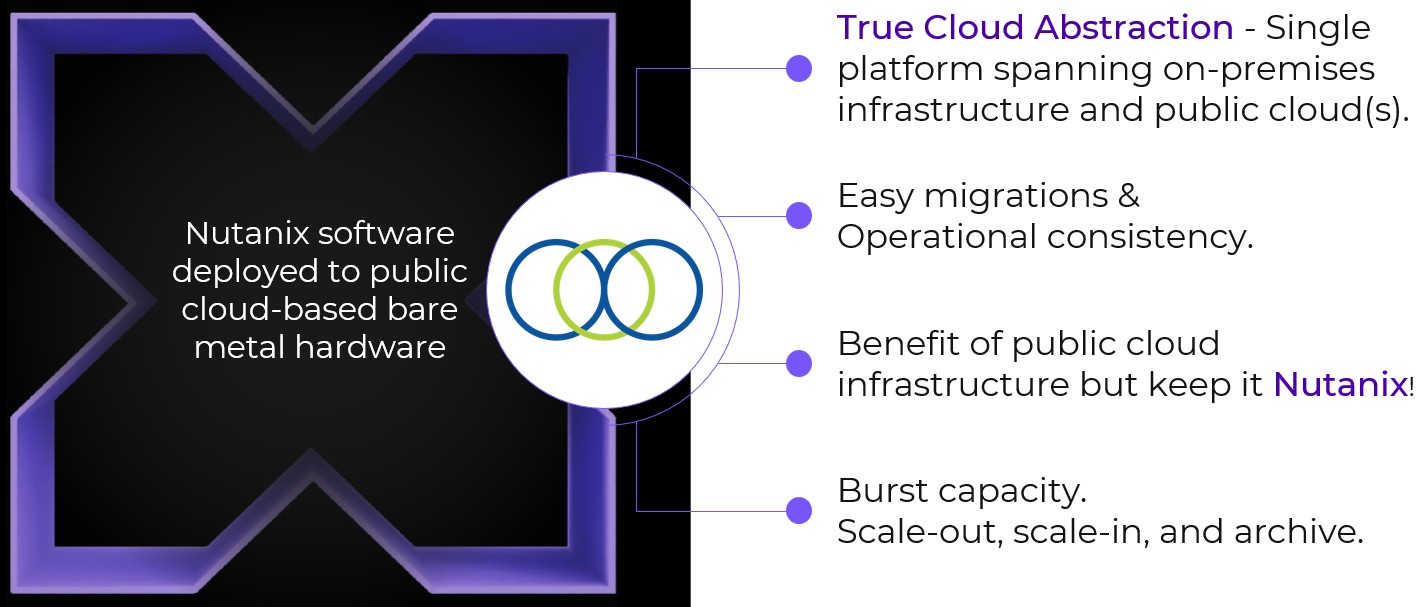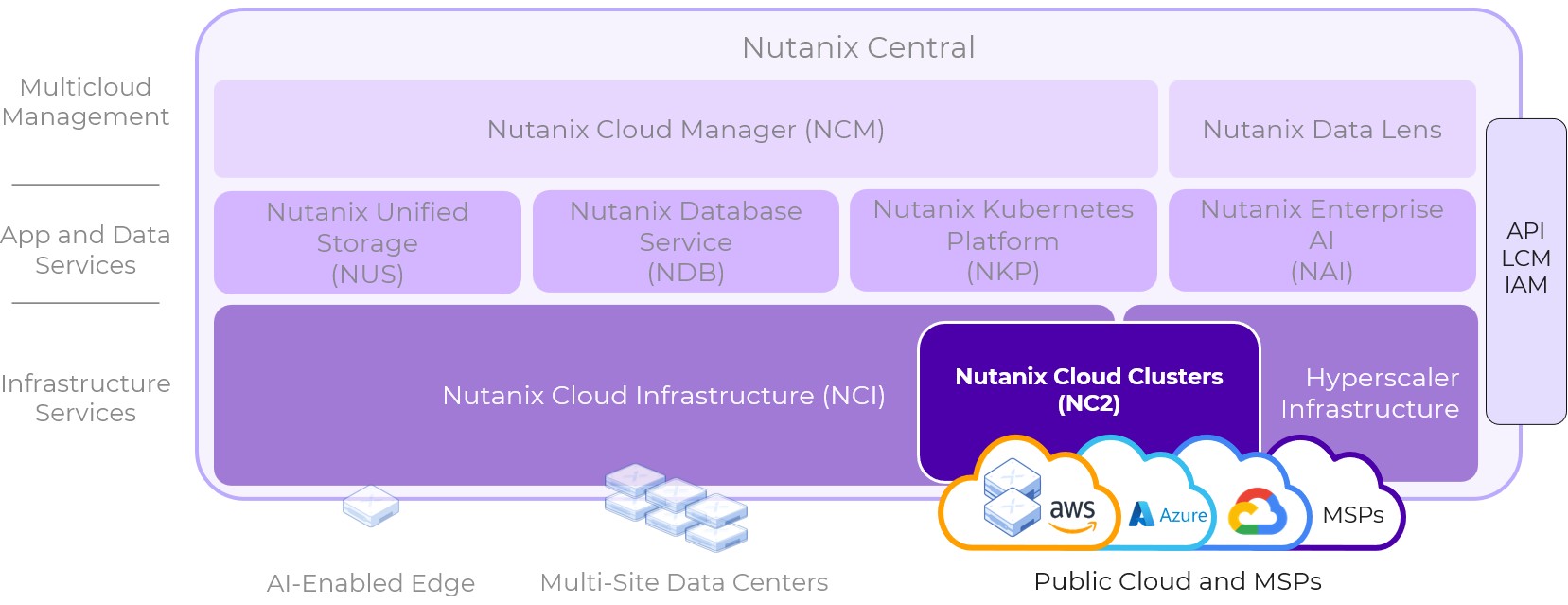Nutanix Cloud Clusters (NC2) helps customers achieve their hybrid multicloud goals. The majority of customers are involved with multiple clouds, including on-prem, private, and public clouds. NC2 allows for running the proven Nutanix cloud platform on bare-metal nodes in public cloud infrastructure. Discover what NC2 is really all about in this blog post!
It’s about providing freedom of choice for our customers to run and host their workloads and data wherever they need. It’s about being cloud agnostic; the ability to quickly extend or move workloads from on-premises or private clouds to public clouds, to edge locations, and vice versa. It’s about utilizing public cloud infrastructure, its global reach and availability, and services, but keeping it ‘Nutanix’. This means customers have the Nutanix-goodness like storage efficiency, workload performance, portability, and increased availability capabilities, as they have on-prem, also in public cloud!
NC2 is a customer-managed solution, not a managed service. This opens up a lot more deployment freedom when it comes to integrating it onto hyper-scaler architectures. Every hyper-scaler comes with its own networking constructs. With NC2, customers can pick and choose the underlying network constructs of choice to fit their business requirements. Customers might already have a public cloud landing zone, with NC2, they can deploy directly into existing landing zones and integrate directly with their public cloud services estate.
What is NC2?
NC2 is the proven Nutanix software stack running directly on top of bare-metal nodes in public cloud infrastructure. Today, AWS and Azure are supported with Google Cloud in public preview! There is also support for (Managed) Service Providers, with OVH Cloud being a popular option. Once NC2 clusters are set up, it becomes ‘just another Nutanix cluster’ operated from our management layer (Prism Central). This means exactly the same user experience, APIs, approaches to lifecycle management (LCM), and identity and access management (IAM) as customers are already familiar with in their on-prem, private clouds.
Above is the entire Nutanix Cloud Platform, with all its multi-cloud management capabilities, applications, and data services, all running on top of the Nutanix Cloud Infrastructure (NCI) foundational layer, where NC2 extends NCI into hyper-scaler infrastructure. There are no strict bundles; customers have the flexibility to run the Nutanix solutions that meet their needs.
Nutanix licenses are completely portable between all your Nutanix infrastructures, including NC2, but can also be purchased on demand, which is ideal for burst or DR workloads in NC2.
NC2 consists of NCI, the proven Nutanix Acropolis Hypervisor (AHV) with Acropolis Operating System (AOS), to abstract compute and storage (local NVMe) resources from the bare-metal nodes in hyperscaler infrastructure to create Nutanix clusters to host workloads. Flow Virtual Networking (FVN), for advanced networking options including load balancing and micro-segmentation, is optional. For NC2 on Azure, the Flow Gateway for north/south traffic is enabled by default.
App and Data Services like Nutanix Database Service (NDB) and Nutanix Kubernetes Platform (NKP) sit very well on top of NC2 for better resource consolidation and performance.
Use-Cases
There is a wide variety of use cases that our customers leverage by using Nutanix NC2. It becomes really easy to extend on-premises infrastructures or move workloads between Nutanix infrastructure endpoints. We’re helping customers to meet their cloud-commit deadlines by providing the ability to quickly and easily migrate workloads to NC2. We have many customers who use NC2 for its elasticity, bursting business-critical VDI farms to meet demand. Elastic Disaster Recovery (DR) is a much-used approach as it allows customers to have a very cost-effective DR site.
With Elastic DR, we create the ability to offload snapshots from on-premises into a recovery site that sits on public cloud infrastructure. We can go as far as utilizing object storage (AWS S3, Azure Blob) as a cost-effective and scalable endpoint for those snapshots to ensure your data is secured in the event of disaster. We do so with our Multicloud Snapshot Technology (MST). In a DR event, customers can retrieve their data and workloads from object storage with MST and recover on a pilot-light or even zero-compute NC2 cluster. This can then be combined (with NC2 on AWS) with a full, instantiated cluster that we can hibernate into object storage as well! Meaning the cluster data and configuration, including workloads, are offloaded into object storage. Only to be resumed when disaster strikes and the cluster/landing zone needs to be rehydrated. In short, Nutanix caters to the need for all the RTO/RPO requirements, and customers can mix and match to what their business needs.
In following posts, I’ll share more details on Elastic DR and more NC2 goodness!




